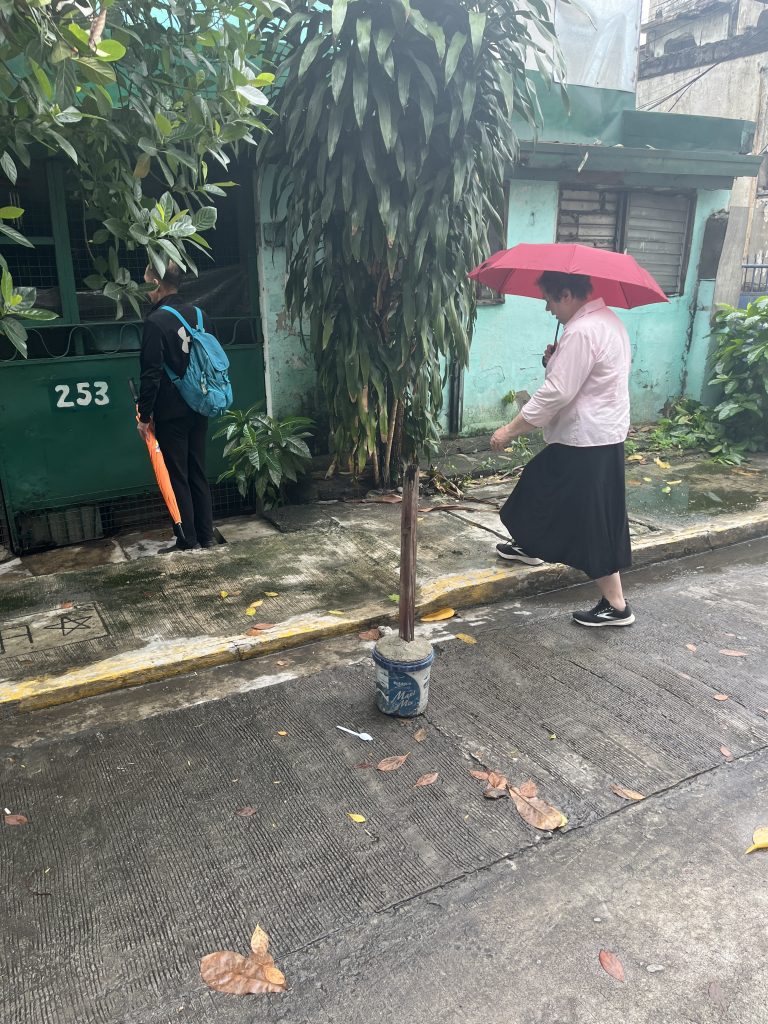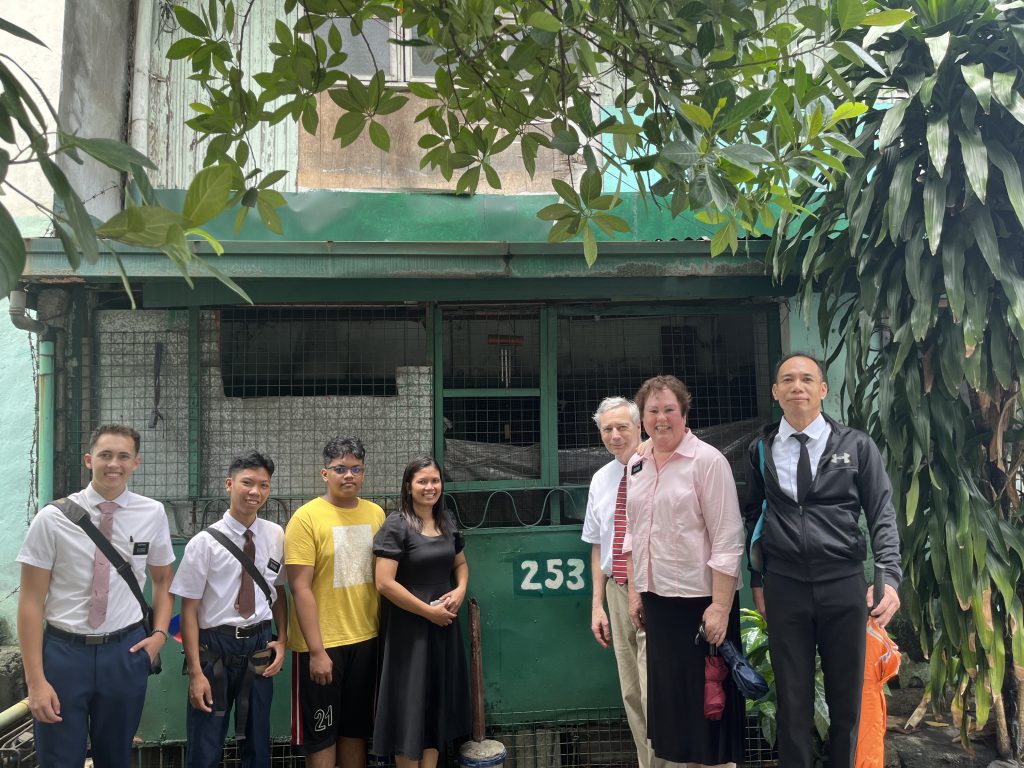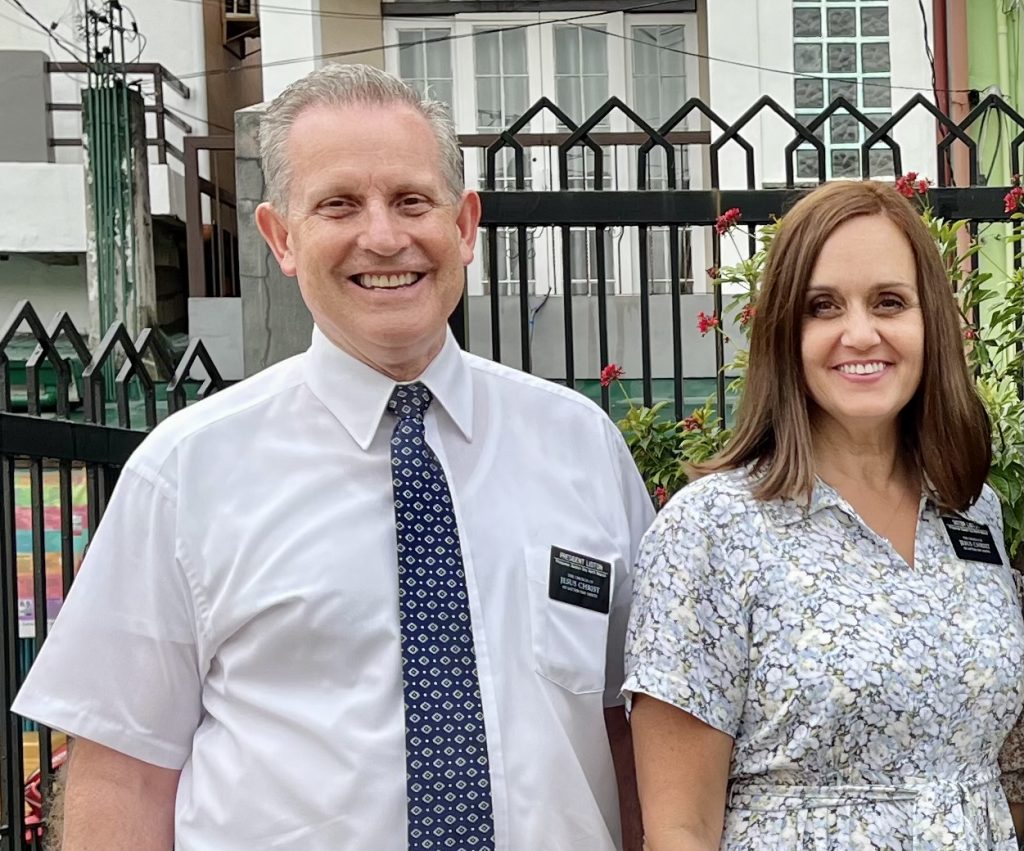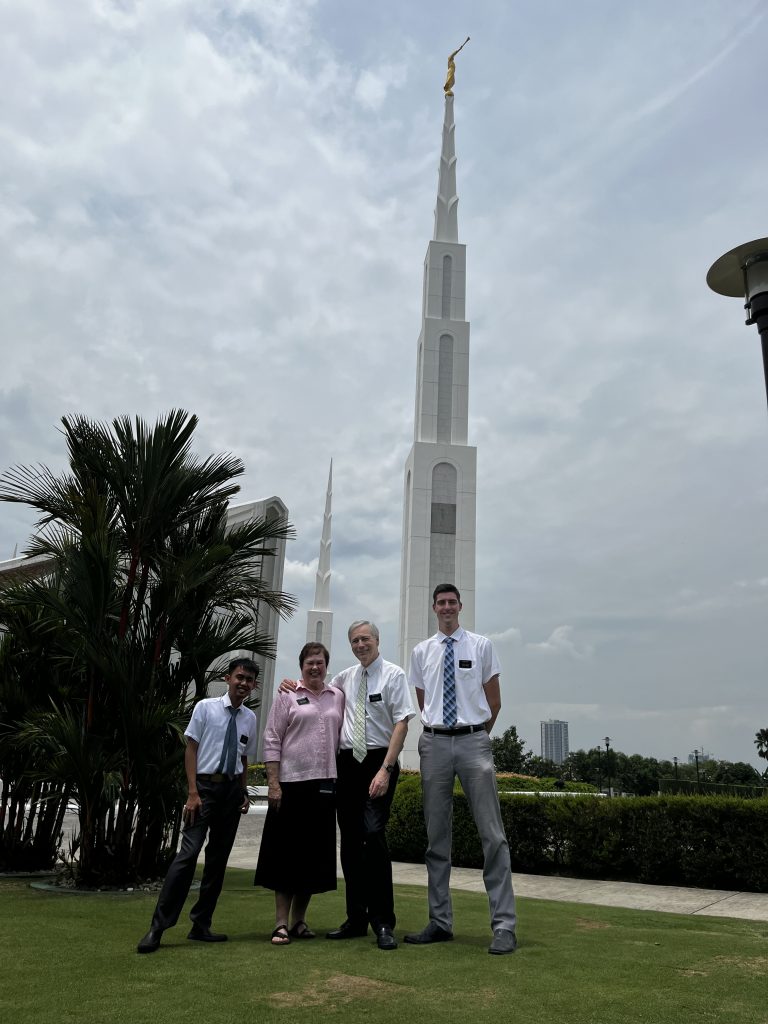After over two months in the Philippines, we’ve had the normal adjustments from living in a different country, getting use to the food, weather, and customs, as well as gaining an understanding of both the scope and technical aspects of our assignment of collecting early Filipino saint’s memorabilia, history, and stories. I believe we’ve successfully made this transition and are beginning to make progress in our specific assignment.
Trees Take Time to Grow
Years ago, we lived in Moraga, a rural community in the San Francisco Bay Area. The home where we lived had several large Cypress Pine trees that were decades old. Some of these trees had grown to 50 to 70 feet in height but had started to lean toward our house. We were concerned that heavy winds or weakening branches would fall on our home.
History is like tree growth – it takes years (decades) to reach maturity but it can be lost unexpectedly in a minute when unexpected event happens. The same can be said of history, if it’s not carefully preserved. It can disappear in an instant.
We have had some interesting experiences in searching out Filipino history. Finding individuals that have a connection with early Filipino history is not as easy as it seems. Even after identifying individuals that have a connection to an event or place in Filipino church history, you still must find where they are today, where they live, or in some instances, if they are still alive, which is not always easy in a country that doesn’t always have logical number street addresses. Nevertheless, we are on the trail of some of these early Filipino saints and the Lord guides us when we least expect it.
Coincidence or Led By the Lord?
A week ago, we joined a group of senior couples on the Philippines Independence Day (June 12th) which is not a workday (since it was a national holiday – like our 4th of July). We volunteered and participated in a “Finding Lost Members” project in a local Filipino ward that was about an hour’s drive from where we live. After arriving at the area, we were given names of members that no one in the ward knew or even if these people lived at the address listed on the paper we were given.
We were paired with Filipino member who was fluent in Tagalog because this was a completely Filipino speaking area. Eventually we found the address – our Filipino member told us that the house number system is somewhat creative and random – because it is not always sequential numbered. It took some time, but after finding the home we were looking for, we knocked on the door which caused the dogs inside an enclosed porch-like entry way to do wild. It took about five minutes for the occupants in the house to corral the dogs.

Marcia out in this Filipino barangáy (which is a local community; village; neighborhood; the smallest Filipino political unit) attempting to find lost members. She just loves being out in the heat, humidity, and rain.
We were invited into a very humble home. After explaining who we were and what we were doing, we handed the paper with the name of a family we were looking for and asked if they were this the family. They said they weren’t that family and that this family hadn’t lived there for some time. This family had apparently rented a portion of their home at one time. After talking to them, we found out that we were talking to two sisters that currently lived in the home with their families. Both were church members. One was attending church and the other (a return missionary) was not.
As the discussion proceeded (now keep in mind that our calling is a Church History senior missionary couple tasked with church history responsibilities and we were just helping a local unit level senior missionary couple serving in the area), they told us that they had been praying what to do and for someone to contact them about some of the pictures, journals, and other memorabilia they had. As we talked, we learned that the home we were sitting in was the first meetinghouse of the Caloocan District formed in 1966 which is now the Caloocan 3rdWard.
In fact, they shared with us that Elder Hinckley, an Apostle at the time, had come to the Philippines to form the first district of the Church in the Philippines in 1966 and was in their home during that visit. They told us were sitting a few feet from where Elder Hinckley had sat when he was in their home visiting with their grandparents.
The reason they had been so concerned and praying about finding a home for some of the pictures, records, and other memorabilia from this era was because they had sold their home and in July they are moving and their home is going to be torn down to make way for new housing units after they move.
Question: Is it a coincidence that the only Church History missionaries that have ever served in the Philippines just happened to volunteer to help another senior missionary couple with the responsibility for finding lost members in this area and just happened to be given the names of two families to find and one of these family’s address just happened live in the home where the first meetinghouse in this area and this historical building that will be torn down in a matter of weeks. We were able to collect artifacts, take pictures, and to make plans to collect more items before they move.
Yep, some may chalk this experience up to chance but you’re never going to get me to believe that. I offered a prayer before leaving their home and the spirit was palpably present. After closing of the prayer, we hugged and took pictures of the inside and outside of their home before leaving.

The above picture is the home and the first meeting house in 1966 in Caloocan with (left to right) the local missionaries (one from California and the other from the Philippines), the son and granddaughter of the owners of this home, me and Marcia, and Brother Willie – a local Filipino member – our guide.
Mission Leaders
Included in the people that we will be interviewing in the future with the purpose of capturing oral histories are local church and mission leaders, past and present. Currently, there are twenty-three missions in the Philippines. Eight of these mission leaders will be released in July. Several of these mission leaders have already been interviewed prior to our arrival. We have scheduled oral history interviews in the next month with some other of these mission leaders. Since each of these mission leaders are responsible for several hundred missionaries, the stories they’ve shared have been fascinating. More on this stories in later blog posts.
For example, this group of eight mission leaders have the distinction of being pandemic mission leaders. They were called in January of 2020. As you know, the world began to shut down in March of 2020. Tens of thousands of full-time missionaries were pulled from missions around the world and sent home. Some of you might remember YouTube/Facebook video of plane loads of missionaries headed home singing as they went.
The Philippines was a country that completely shut down by government mandate. Life in the US continued on a modified basis but life in the Philippines was complete different. There was a mandatory and total shut down. No travel in or out of the country, no one leaving their home, most businesses closed, from March of 2020 to August of 2020. It took a year before things began to return to normal and still today 20-30 of Filipinos wear masks. The only missionaries in the country during the early stages of the pandemic were native Filipino missionaries and they had to stay inside and never leave their apartments.
President and Sister Liston, mission leaders of the Quezon City North mission who will be leaving in July, during their oral history interview last week shared number of phenomenal stories. Here is a brief recap:
They were to arrive in June 2020 and final were allowed into the country in August of 2020. They shared how the teaching of the gospel continued to move forward during this time. While this was a difficult time for the entire country and for the Church, there were several valuable lessons that came out of the pandemic.
One was how the gospel was taught changing from face-to-face teaching to meeting and teaching people via Facebook Messenger using primarily a smart phone. In the Philippines few people have computers but nearly every Filipino has a cell phone and nearly every Filipino has a Facebook account – Facebook is the social media platform of choice. Since everyone was home bound, people were a lot more willing to listen to a faith-based message than they were during pre-pandemic times. As the country began to open up, the limit on public meetings was slowly lifted beginning with no more than five people to gather at a time. Interestingly, most of these meetings that were held at church were baptismal services with only the missionaries doing the baptism, the bishop, and the people getting baptized. Often the first time these people met a member of the Church was at their baptism.
While the pandemic had a temporary impact, the momentum quickly resumed when things began to return to normal. Out of the pandemic new teaching and fellowship techniques emerged that were tweaked and improvement in the post-pandemic into a completely new set teaching and fellowshipping practices. One was working with members like the “Lost Member Project” that we participated in modified way that has evolved into a totally member-missionary driven system. This has dramatically altered the finding profile from door knocking to working with a list of names to find. The work has exploded in this mission based on things learned during the pandemic. As it is often said, the “Lord works in mysterious ways.”
Our calendar is filling up as we continue to interview these mission leaders before they are released from their three-year mission assignments. It has been a faith promoting experience to listen to the stories of how these young 18-year-old young men and 19-year-old young women from all over the world thrive in a strange country with a new language and mission leaders that work 90 – 100 hours a week to ensure these missionaries needs are met and that they are looked after. Missonary parent should be grateful for these mission leaders.
A year from now when the next group of mission leaders are preparing to leave, we plan on scheduling these interviews a few months earlier but since we are the first church history missionaries in the country, we didn’t have much time to get these interviews scheduled earlier than we did. We are still figuring out things on a day-to-day basis.
We’ll keep you posted on how these interviews unfold.

President and Sister Liston – Pandemic Mission Leaders – he was an Oral Surgeon
prior to his call return home June 29th.
Hard to Miss
A six-foot-ten inch and a five-foot-tall missionary pair are hard to miss in Manila riding Jeepney’s or walking down the road. Elder Bliss, a member of our home ward in California and a high school basketball superstar was recently attending a temple session in the Manila Temple. A few weeks earlier, we had met his mission president at church and we asked about Elder Bliss. The president’s wife told us that he would be attending the temple and gave us the time and date he would be at the temple. Since our offices are nearly the Manila Temple, we’re able to just happen to be at the temple when he exited the temple and visit with him briefly. Elder Bliss is somewhat of a celebrity in the Philippines.

I bet you can’t guess which one is Elder Bliss in the above picture and which on is his companion?
More Things We Are Learning About the Philippines
Eating Utensils. It’s customary in the Philippines to eat food served on a plate with a fork and large spoon with no knife. If you eat in a local restaurant, knives are rarely used unless you ask for one. For more formal events, knives are more common.
The Filipino eating style is to hold a large spoon in the right hand with the fork held in the left hand. Both the fork and spoon are used to cut or tear the food apart which is sometimes challenging to do. After the food has been dismembered, cut, or torn apart, the fork is used to load up (put) food items on the spoon. Once the spoon has adequately been loaded with food, the spoon is lifted to the mouth to be eaten. In my opinion, this is very efficient.
When I served my first mission in South Africa two lifetimes ago, the utensils use was similar. However, in South Africa the fork and knife were used together with the fork held in the left hand and the knife used to cut and then load the fork up with food and the fork used with the left hand to eat the food. In the US, the custom of cutting the food and then putting the knife down and using the fork to stab the food and then eating it from the fork held in the right hand is common.
In my mind, the eating customs of both the Philippines and South Africa are superior to the customary method used in the US. After returning from South Africa, I continued to use my dining utensils as I did in South Africa for several decades before slowly reverting to old habits. We’ll have to see what happens when I return to the US in couple of years with my newly formed eating custom.
